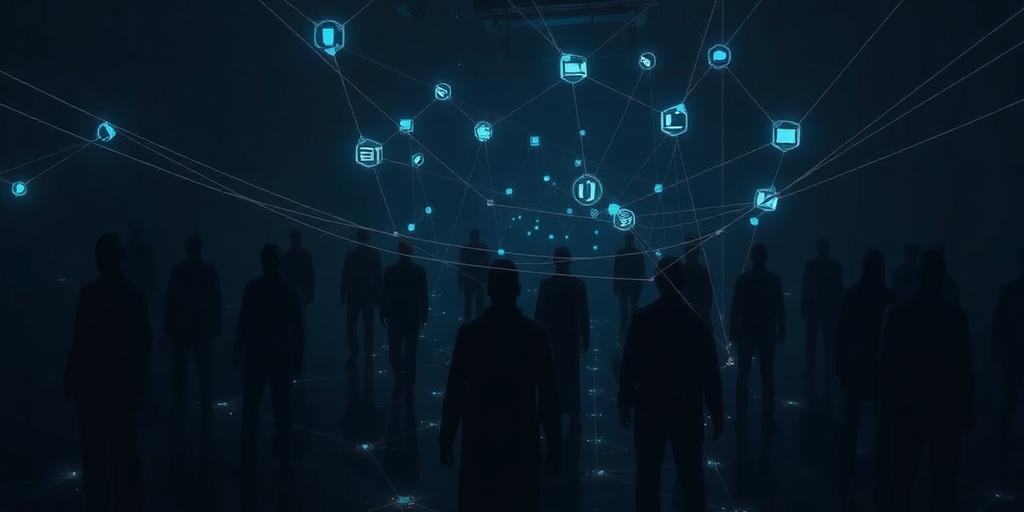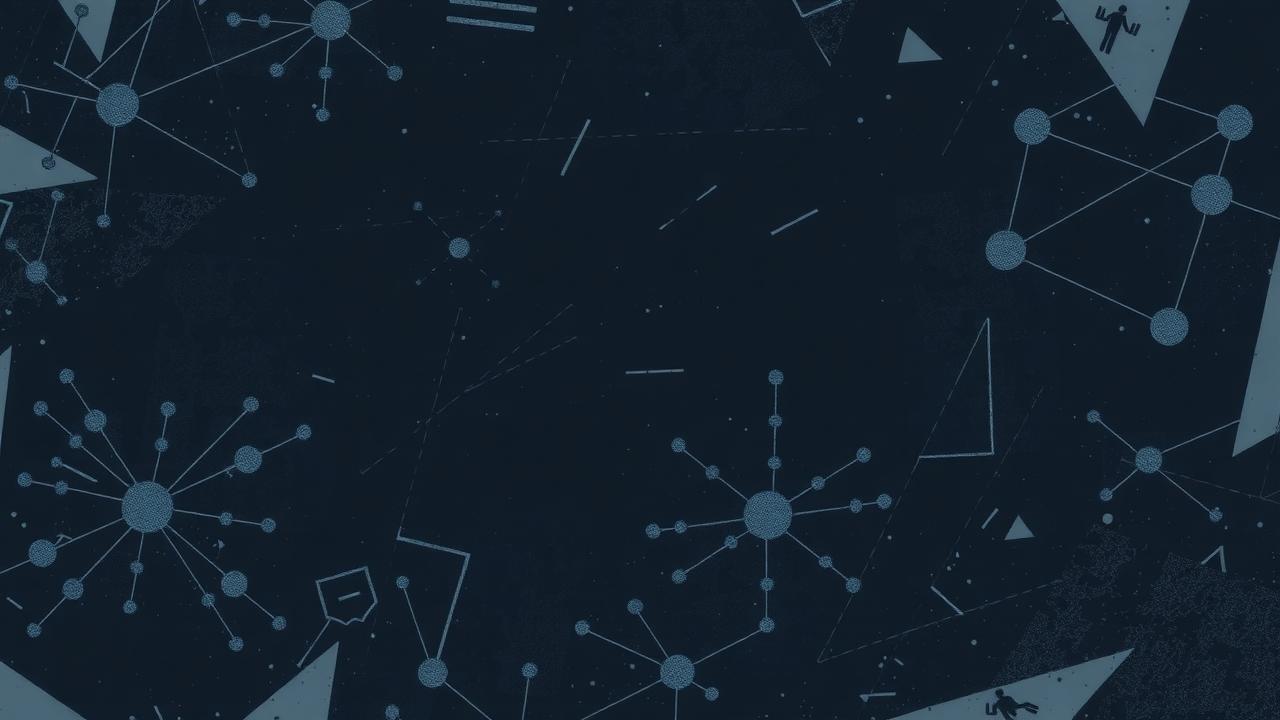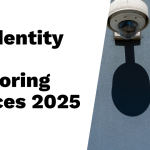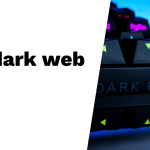The dark web data market is basically an online black market where stolen or sensitive digital information is bought and sold. These markets exist on the dark web, a hidden part of the internet accessible only through special browsers like Tor that keep users anonymous. The platforms work much like regular e-commerce sites, offering vendor listings, reviews, and even escrow services to ensure transactions go smoothly. Buyers and sellers deal mostly in cryptocurrencies such as Bitcoin or Monero to maintain privacy. Commonly traded data includes personal info, financial details, login credentials, hacking tools, and sometimes government secrets. Despite efforts from law enforcement to shut them down, these markets keep evolving and pose ongoing challenges for cybersecurity.
Table of Contents
- What Is the Dark Web Data Market
- How Do Users Access Dark Web Markets
- How Dark Web Data Markets Are Structured
- Types of Data Sold on the Dark Web
- Who Are the Participants in These Markets
- How Transactions Work in Dark Web Markets
- Common Risks and Problems in Data Markets
- How Law Enforcement Tracks Dark Web Activity
- Ways to Protect Yourself from Dark Web Threats
- Legal and Illegal Uses of the Dark Web
- Frequently Asked Questions
What Is the Dark Web Data Market

The Dark Web Data Market consists of online platforms within the dark web where stolen or illegal digital data is bought and sold. These markets operate on darknet networks like Tor or I2P, which provide anonymity for both users and hosts, making it difficult to trace activities. Unlike the surface web, the dark web is not indexed by standard search engines and requires special tools to access. The data traded includes personal information, financial records, login credentials, hacking tools, and sometimes illegal goods, all exchanged in a marketplace format that resembles regular e-commerce sites but focuses entirely on illicit items. To protect participants, these markets rely heavily on encryption and anonymity, using cryptocurrencies for transactions to avoid oversight from banks or authorities. Reputation systems help build trust between buyers and sellers despite the illegal nature of the trade, while market operators often provide escrow services and dispute resolution to reduce fraud and keep the market stable. Vendors and buyers also use operational security measures like VPNs, encrypted messaging, and pseudonyms to further shield their identities.
How Do Users Access Dark Web Markets
Users access dark web markets primarily through anonymizing software like the Tor browser, which hides their IP address by routing internet traffic through multiple relays worldwide. This process helps mask a user’s location and identity, making it difficult to track their activity. While Tor is the most common platform, other darknets such as I2P and ZeroNet also host similar markets, though they are less widely used. Dark web sites use complex .onion URLs that are often long strings of random characters and change regularly to avoid detection or blocking by authorities. Finding these URLs is not straightforward; users typically rely on trusted forums, word of mouth, or invitations from existing members to access these markets securely. Accessing the dark web itself is legal, but buying or selling illegal goods there is against the law. To maintain anonymity, users must properly download and configure tools like Tor and often combine them with VPNs for extra layers of privacy. Communication between buyers and sellers is encrypted, commonly using PGP keys, to prevent interception of sensitive messages. Many markets require registration or an invitation, which adds a level of exclusivity and security. Despite these precautions, users must remain cautious to avoid scams, malware, and law enforcement traps that are common risks when navigating dark web markets.
How Dark Web Data Markets Are Structured

Dark web data markets are designed to resemble typical e-commerce websites, complete with product listings, search functions, and user reviews to help buyers navigate the offerings. Vendors establish profiles where they list their products, usually stolen data sets or hacking tools, along with prices and detailed descriptions. To build trust in an otherwise risky environment, these markets rely heavily on reputation and feedback systems that let buyers evaluate the reliability of sellers based on past transactions. Payments are almost exclusively made with cryptocurrencies like Bitcoin and privacy-focused coins such as Monero, ensuring anonymity. Many markets use escrow services that hold the buyer’s payment until the product delivery is confirmed, reducing the chances of fraud. Some platforms enhance security by implementing multisignature wallets, which require multiple parties to approve a transaction before funds are released. Communication between buyers and sellers is protected through encryption methods like PGP or OTR, safeguarding messages from interception. Vendors often spread their operations across several markets to minimize risk and maintain steady income streams. Market administrators oversee the platform by resolving disputes, monitoring for fraudulent behavior, and sometimes providing moderators or customer support to enforce rules and assist users, helping to sustain the marketplace’s overall viability.
Types of Data Sold on the Dark Web

The dark web data market deals in a wide range of stolen and illicit information. One of the most common types is personal identifiable information (PII), which includes details like names, dates of birth, social security numbers, and addresses. This information is often used for identity theft and fraud. Financial data is another hot commodity, with credit card numbers, bank account credentials, and online banking logins regularly traded to facilitate unauthorized transactions or cash out schemes. Account credentials for email, social media, streaming platforms, and gaming services are also sold, enabling criminals to hijack profiles or commit further fraud. More sensitive data, such as corporate trade secrets, internal documents, and classified government files, occasionally surface, often fetching higher prices due to their value. Alongside data, hacking tools and exploits like zero-day vulnerabilities, ransomware kits, phishing packages, and various malware are available for purchase, supporting further cyberattacks. Counterfeit documents including fake IDs, passports, and driver’s licenses are common, often paired with identity data. Some marketplaces bundle illegal goods like drugs, firearms, or hacking services with data offerings. Bulk sales of aggregated data breaches from companies or databases are frequent, with sellers highlighting ‘fresh’ or verified data to command premium prices. Beyond products, some markets provide services such as money laundering or hacking-for-hire, expanding the ecosystem around stolen data.
| Type of Data | Examples | Description |
|---|---|---|
| Personal Identifiable Information (PII) | Names, Dates of Birth, Social Security Numbers, Addresses | Commonly traded data used for identity theft and fraud. |
| Financial Data | Credit Card Numbers, Bank Account Credentials, Online Banking Logins | Used for financial fraud, unauthorized transactions, and money theft. |
| Account Credentials | Email, Social Media, Streaming Services, Gaming Platforms | Access to user accounts for takeover or resale. |
| Corporate and Government Data | Trade Secrets, Internal Documents, Classified Information | Sensitive data stolen for espionage or competitive advantage. |
| Hacking Tools and Exploits | Zero-day Vulnerabilities, Ransomware, Phishing Kits, Malware | Software and tools used to compromise systems or conduct attacks. |
| Counterfeit Documents | Fake IDs, Passports, Driver’s Licenses | Fraudulent documents used for identity disguise or unauthorized access. |
| Illegal Goods | Drugs, Firearms, Hacking Services | Items sometimes bundled or sold alongside data markets. |
| Aggregated Data Breaches | Company or Database Dumps Sold in Bulk | Large scale data sets from breaches offered for resale. |
| Verified or ‘Fresh’ Data | Recently Acquired or Validated Information | Command higher prices due to reliability and usability. |
| Additional Services | Money Laundering, Hacking-for-Hire | Support services offered to facilitate illicit activities. |
Who Are the Participants in These Markets

Dark web data markets are made up of various participants playing distinct roles. Vendors are often individuals or organized groups who steal or buy data, then resell it for profit. These sellers might specialize in certain data types or hacking services. Buyers include identity thieves, fraudsters, hackers, and sometimes intelligence agents seeking information for different purposes. Market operators manage the infrastructure, handle escrow services, enforce rules, and keep the marketplace running smoothly. Escrow agents or moderators act as neutral parties who hold payments and resolve disputes between buyers and sellers to build trust. Facilitators provide essential tools like anonymizing software, cryptocurrency mixers, and other services that help maintain privacy and security. Cybercriminal groups often focus on specific niches, such as credit card data or ransomware kits, operating as specialized suppliers. Money launderers convert cryptocurrency earnings into usable cash, helping criminals avoid detection. Whistleblowers or insiders sometimes leak data to these markets for personal or political reasons. Law enforcement agents and security researchers constantly monitor, infiltrate, and attempt to dismantle these markets to curb illegal activities. Finally, there are passive users who browse or collect intelligence without directly buying or selling, often to stay informed or monitor threats.
How Transactions Work in Dark Web Markets
Transactions in dark web markets rely heavily on cryptocurrencies like Bitcoin, Monero, and Zcash to maintain anonymity. While Bitcoin remains widely used, concerns over its traceability have pushed many users towards privacy-focused coins such as Monero, which offer stronger protections against tracking. To further hide the flow of funds, users often employ cryptocurrency tumblers or mixers that shuffle coins through multiple transactions, making it difficult to trace their origin or destination. Marketplaces typically provide escrow services, where the buyer’s payment is held securely until the buyer confirms receipt of the goods or data. This system helps reduce fraud, but buyers can choose to ‘finalize early’ to release funds before confirmation, which increases the risk of being scammed if the vendor fails to deliver. Communication between buyers and sellers is encrypted using tools like PGP or OTR messaging to keep transaction details private. Vendors take extra operational security measures by using VPNs, anonymous devices, and changing writing styles to avoid detection. Reputation systems play a key role in building trust, as buyers rely on feedback scores and reviews to decide whom to transact with. Some markets add security by supporting multisignature wallets, requiring multiple parties to approve fund releases, which reduces the chance of theft. Dispute resolution mechanisms are in place to handle complaints, helping protect both buyers and sellers and adding a layer of accountability to these otherwise risky transactions.
Common Risks and Problems in Data Markets
Dark web data markets carry significant risks that affect both buyers and sellers. One frequent issue is exit scams, where market operators or vendors vanish with escrowed funds, leaving users without recourse. Fraudulent vendors often sell fake, outdated, or stolen data that is unusable, wasting buyers’ money and time. Market instability is common, driven by law enforcement takedowns, arrests, hacks, and technical failures, which cause sudden closures and force users to migrate to new platforms. Users also face threats like malware infections and phishing attacks when dealing with untrusted parties, further complicating transactions. Legal risks are substantial: individuals caught participating in illegal trades risk prosecution, asset seizure, and long-term consequences. Reputation systems on these markets can be manipulated through fake reviews and ratings, making it difficult to trust sellers. Data quality is another persistent problem, with many listings containing incomplete, outdated, or fabricated information that cannot be reliably verified. Escrow systems, intended to protect buyers, sometimes fail or lead to disputes that result in lost funds or delayed transactions. These combined problems create a volatile and risky environment where trust is fragile and losses are common.
- Exit scams where market operators or vendors disappear with escrowed funds
- Fraudulent vendors selling fake or stolen data that is unusable or outdated
- Law enforcement takedowns cause market closures but often lead to new markets emerging
- Users risk malware infections or phishing attacks when interacting with untrusted parties
- Market instability due to frequent hacks, arrests, and technical failures
- Legal risks for users engaging in illegal transactions, including prosecution and asset seizure
- Reputation manipulation through fake reviews or ratings to appear trustworthy
- Data quality issues such as outdated, incomplete, or fabricated information
- Challenges in verifying seller claims or the authenticity of data
- Escrow system failures or disputes leading to lost funds or delayed transactions
How Law Enforcement Tracks Dark Web Activity
Law enforcement agencies use a mix of undercover work, technology, and collaboration to track dark web activity. They often infiltrate markets by posing as buyers or sellers to gather intelligence and identify key players. Technical takedowns are coordinated internationally to seize marketplace servers and disrupt operations, though these efforts can be complicated by the markets’ tendency to reappear or shift to decentralized platforms. Monitoring dark web forums and marketplaces helps spot emerging threats and stolen data early, while specialized dark web monitoring tools alert organizations when their information is found for sale. Investigators also analyze cryptocurrency transactions using blockchain tracing tools to follow the flow of illicit funds, despite criminals’ use of mixing services designed to hide these trails. Law enforcement takes advantage of operational security mistakes made by criminals, such as reusing usernames or IP addresses, to unmask identities. They work closely with cybersecurity experts and private companies to improve intelligence gathering and often rely on informants or whistleblowers for insider information. Efforts to disrupt cryptocurrency mixers have aimed to reduce anonymity, but criminals continuously adapt, making tracking a constant challenge.
Ways to Protect Yourself from Dark Web Threats
Protecting yourself from dark web threats starts with vigilance and practical security steps. Using dark web monitoring services can alert you if your personal information is found for sale, giving you a chance to act quickly. Strong password hygiene is crucial: use password managers to create unique, complex passwords and enable multi-factor authentication wherever possible to add an extra layer of security. Regularly monitoring your credit reports helps detect unauthorized activity early, and placing credit freezes can prevent fraudsters from opening new accounts in your name. Staying educated about phishing, social engineering, and malware risks is essential since these are common methods criminals use to steal data. Employ advanced cybersecurity tools to guard against malware and ransomware attacks, and always keep your software and operating systems updated to patch vulnerabilities. Limit how much personal data you share online and avoid reusing passwords across different sites to reduce exposure. Be cautious with email attachments, links, and downloads, especially from unknown sources, as they may carry hidden threats. Using network security tools like VPNs and firewalls can protect your internet traffic and add a layer of privacy. For organizations, gathering threat intelligence from dark web sources helps anticipate attacks and strengthens defenses. These combined efforts create a more resilient barrier against the risks posed by dark web data markets.
Legal and Illegal Uses of the Dark Web
The dark web is often linked to illegal activities such as drug trafficking, identity theft, fraud, and the sale of stolen data. Criminals exploit its anonymity to trade personal information, hacking services, counterfeit goods, and other illicit products without easy detection. However, the same privacy features that enable these crimes also support legitimate uses. Journalists, whistleblowers, and activists rely on the dark web for secure, anonymous communication, especially in countries with heavy surveillance or censorship. Some organizations maintain dark web sites to accept anonymous tips or reports, protecting sources and encouraging free speech. Law enforcement agencies use the dark web to monitor criminal enterprises and gather intelligence, while researchers study its markets to track cybercrime trends and devise better defenses. Cryptocurrency and anonymizing tools like Tor have dual roles: they facilitate both illegal deals and protect privacy rights. This dual-use nature creates ongoing challenges for regulators and enforcers who must balance preventing crime with preserving legitimate anonymity and freedom online.
Frequently Asked Questions
1. What kind of information is usually sold on the dark web data market?
The dark web data market often features stolen personal information like email addresses, passwords, credit card details, and sometimes more sensitive data such as social security numbers or medical records.
2. How do buyers and sellers usually stay anonymous in these markets?
Both buyers and sellers use tools like Tor for anonymous browsing, encrypted messaging, and cryptocurrencies for payments to keep their identities hidden while trading data.
3. Are the data sources on the dark web always from hacks or leaks?
Not always. While many data sets come from hacks or data breaches, some might originate from scams, insider access, or even data collection through malware and phishing techniques.
4. What role do reputation systems play in the dark web data market?
Reputation systems help buyers assess the reliability of sellers by tracking feedback and ratings based on past transactions, which is important since there’s a high risk of scams or receiving fake data.
5. How is the dark web data market structured technically to handle sales?
These markets typically operate on hidden websites accessible through specialized browsers, using encrypted communication channels, escrow services for transactions, and forums or listings to advertise data for sale.
TL;DR The dark web data market is a hidden online space where stolen personal and financial information, hacking tools, and other illicit goods are bought and sold anonymously, primarily using cryptocurrencies like Bitcoin and Monero. Access requires special browsers like Tor, and these markets function like e-commerce sites but with extra privacy and security measures such as escrow and encrypted messaging. Participants include vendors, buyers, market operators, and law enforcement, each playing distinct roles. Despite efforts to shut them down, these markets often reappear or adapt. Risks include scams, fraud, and legal consequences. Individuals and organizations can protect themselves through strong cybersecurity practices and dark web monitoring. While often associated with illegal activity, the dark web also serves legitimate purposes like privacy and free speech in restrictive environments.





